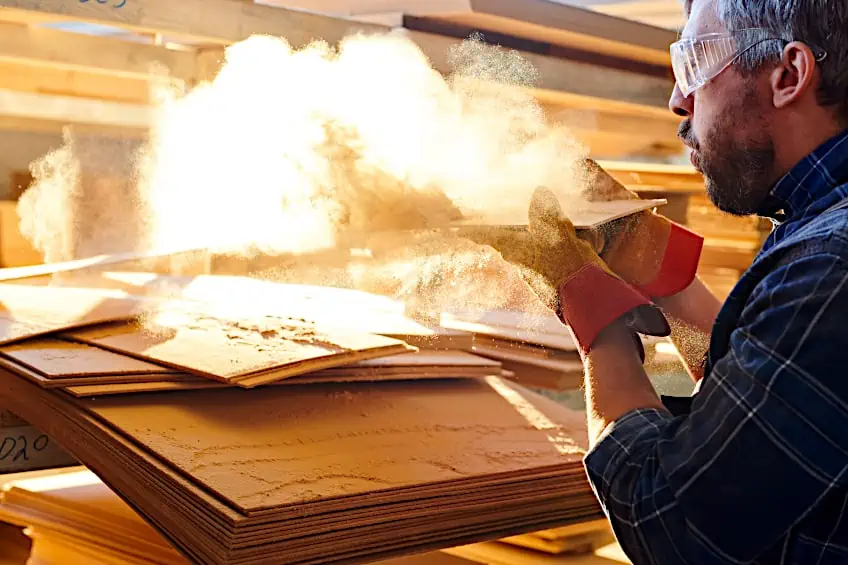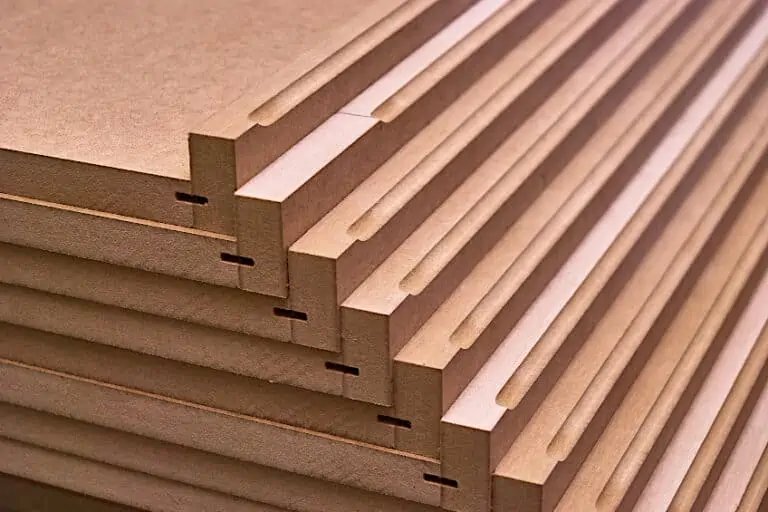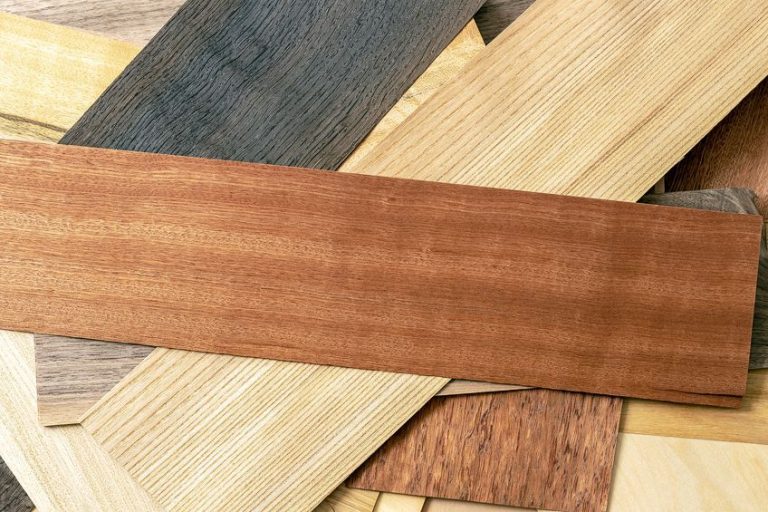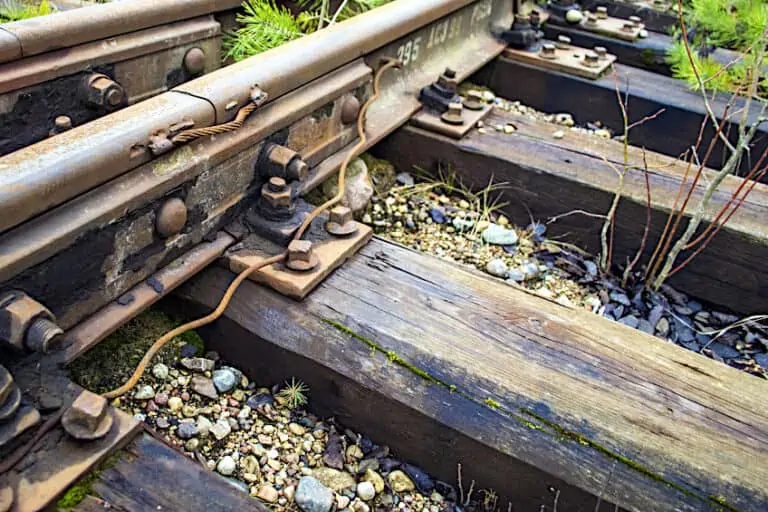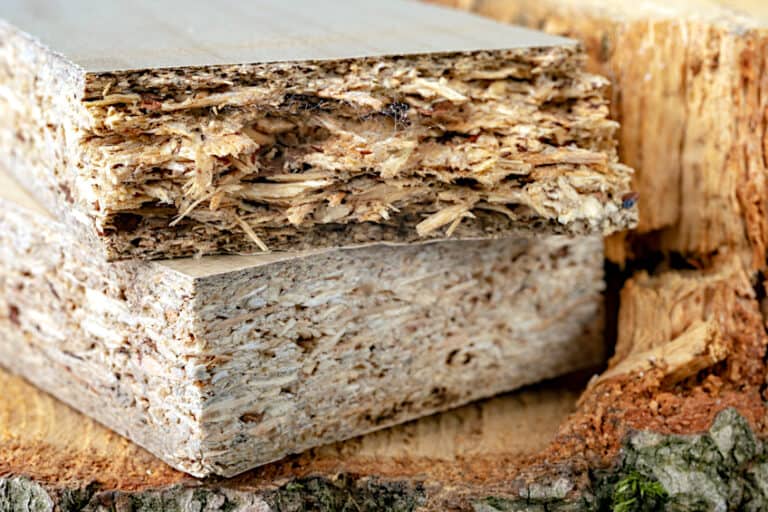How to Clean Wood After Sanding – Tips to Achieve the Best Finish
Sanding your workpiece is an important part of any wood crafting project. Not only does sanding make your workpiece more receptive to paints and wood treatment oils, but it ensures that the surface of the wood board that may have been conditioned by the elements over time is adequately removed. This is fairly common knowledge even if you’ve done very little wood crafting, but crafters tend to underestimate the importance of cleaning a workpiece once it’s been sanded. This being said, let’s have a look at how to clean wood after sanding, what you can use to do it, and why sanding is important.
Why Is Sanding Your Wooden Workpiece Important?
Why is sanding your wood an important part of the painting or staining process? Put simply, sanding a wooden workpiece increases the surface friction of the wood, allowing for increased adhesion of substances like paint or wood treatment products such as wood stain and/or varnish. The greater the adhesive strength of the coating or wood treatment, the better protection and aesthetic finish they will provide.
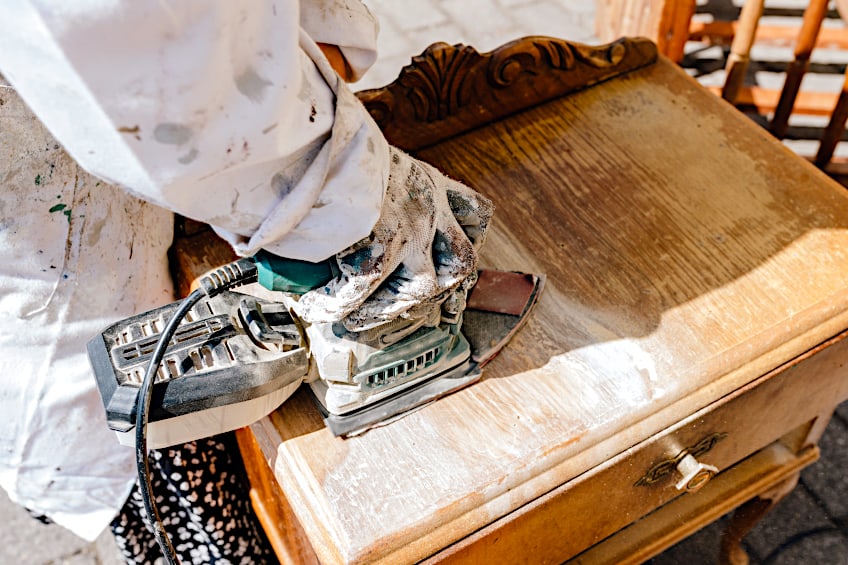
Sanding the surface of your wooden workpiece doesn’t only increase surface friction though. Removing the top layer of wood allows you to rid the board of material that could have been conditioned over time due to exposure to the elements. This surface wood can contain particles of dirt, and the texture is typically unconducive to staining, painting, and other forms of wood treatment.
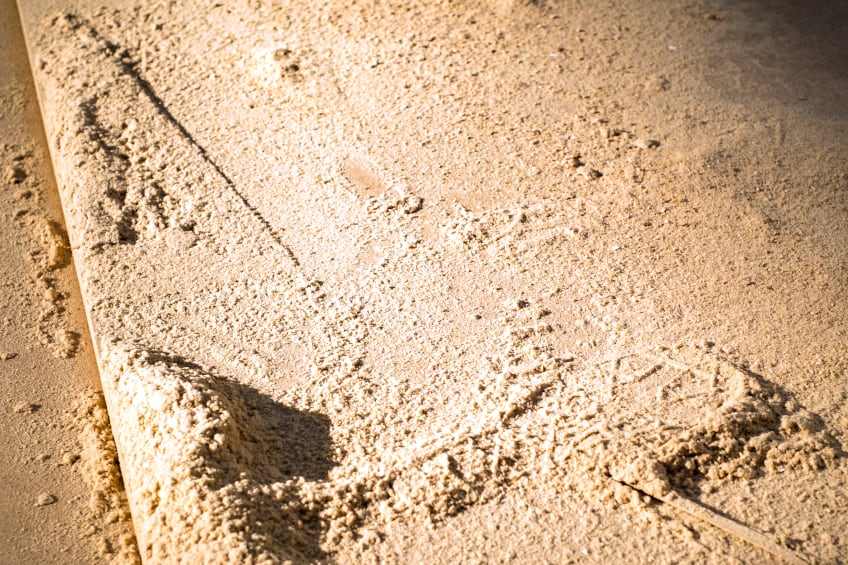
Sanding your workpiece essentially provides the best surface possible for things like wood joints, painting, staining, applying epoxy, varnish, and any other substance you’d like to use on the board’s surface. Failing to sand your workpiece adequately can result in poor adhesion by the aforementioned substances, typically resulting in poor performance and overall appearance.
Keep in mind that the simple act of sanding your workpiece isn’t enough. The workpiece needs to be sanded evenly and consistently to ensure uniform absorption of surface coatings like paint, and wood treatment products like wood stain and/or linseed oil. Sanding a wooden workpiece correctly also means making sure that the surface is as flush as possible.
When Would You Need to Clean Wood After Sanding?
Cleaning the surface of your wooden workpiece once it has been sanded is best practice in virtually any woodworking endeavor, even if it isn’t always absolutely necessary. This being said, let’s have a look at a few instances where you should definitely clean the surface of your freshly sanded workpiece to ensure the best possible finish.
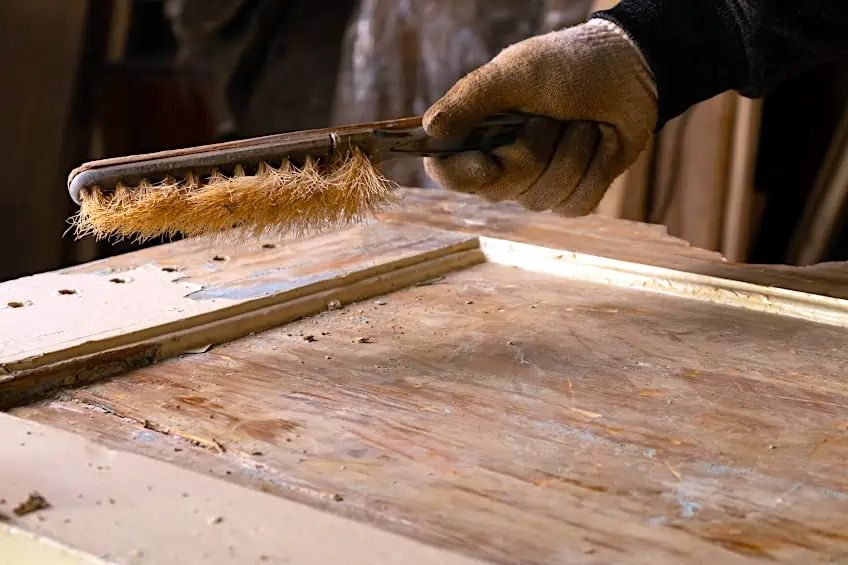
When Applying Paint
Paints are a surface coating that is designed to both protect the surface of your workpiece and increase its aesthetic appeal. You should always ensure that your surface is clean of grime and wood particles after it has been sanded if you intend on painting it. Why? The wood particles and/or grime will get trapped under the surface of the paint, causing it to raise and bubble once it dries.
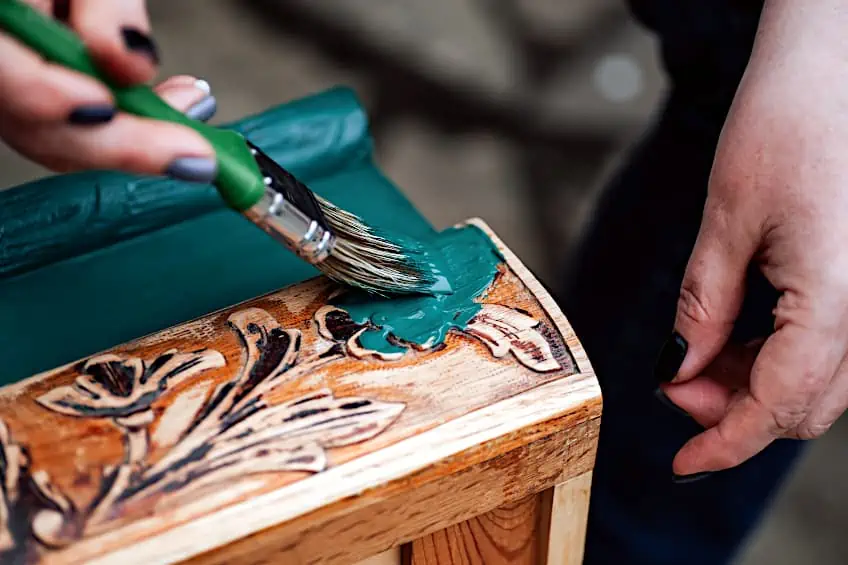
When Applying Epoxy Resin
Epoxy resin is a popular protective coating commonly used on wooden surfaces. It is extremely important to ensure that your surface is as clean as possible before applying epoxy to it, or it could ruin the coating and potentially ruin the surface of your workpiece. Epoxy is a two-part thermoplastic mixture that requires a clean surface to cure completely, so any impurities present when it is applied could cause it to cure incorrectly, or not at all.
When Applying Wood Treatment
Wood treatment oils and varnishes are essentially any substance other than a surface coating like paint or epoxy. This includes things like tung or linseed oil, wood varnish, lacquer, or even beeswax! Wood treatment substances tend to bond with the wood’s fibers, changing the color and increasing the wood’s resistance to things like moisture, insect infestation, rot, and mildew.
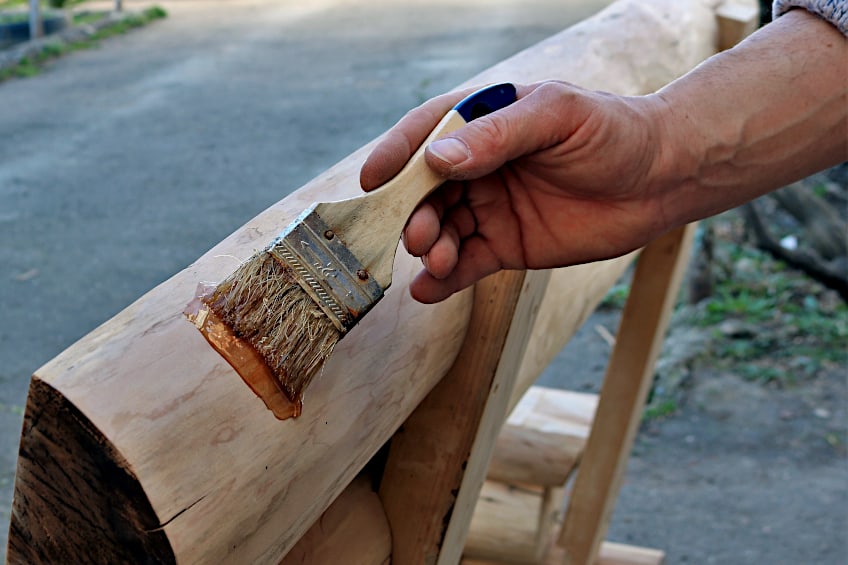
Choosing to clean wood with mineral spirits is a good call if you’re going to be using any of the aforementioned products. Why? The substances need to soak into the surface of the workpiece, and if they’re obstructed by wood particles or grime it could result in an inconsistent and/or blotchy finish. This could result in you having to sand your workpiece again and repeat the application process.
How to Clean Wood After Sanding
While sanding your workpiece is important, cleaning your workpiece adequately after it has been sanded is equally as important. Why? Once your workpiece has been sanded, there’s usually a lot of dust and other particles left behind on the surface of the wood board. These particles tend to cling to the board’s surface, which can cause a variety of issues.
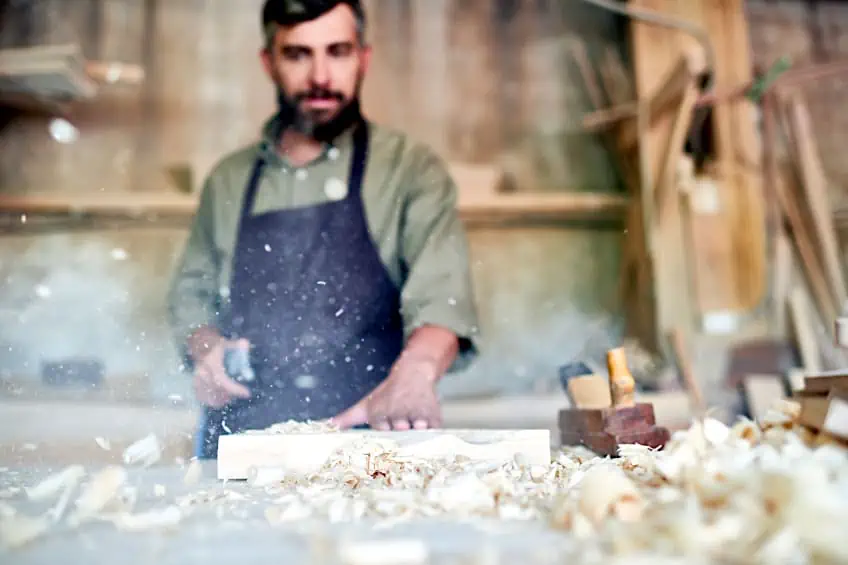
Failing to clear the surface of your workpiece of wood particles can result in poor adhesion by paints and wood treatment, injury when handling the workpiece, inhalation of wood particles, and unnecessary wood particles ending up on the floor of your workspace. This being said, what is the best way to clean wood after sanding? Let’s have a look at a few popular methods and find out which are best.
Use a Paint Brush
While it might seem a bit silly, using a paintbrush to clean wood particles off the surface of a wooden workpiece is actually quite effective. The bristles of a clean paintbrush tend to get into the little recesses on the wood’s surface, removing any wood dust or fragments generated during the sanding process.
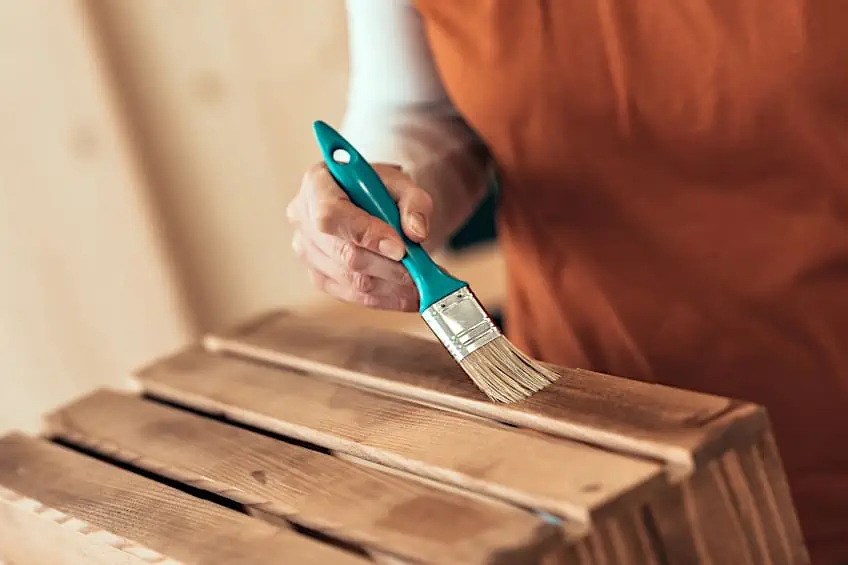
This might not be the best way to clean wood after sanding considering how labor-intensive and time-consuming it can be, but it’s definitely effective. Using different-sized brushes, simply brush over the surface of the workpiece as if you were using a tiny broom. Always ensure that the brushes are clean and never come into contact with paint or similar materials.
Use a Vacuum Cleaner
For many wood crafters, this method is the most effective. Using a vacuum cleaner to clear the surface of your workpiece is not only less labor intensive compared to using a series of paint brushes, but it will take less time as well. If you have a number of workpieces that need to be cleaned, or simply don’t have an awful lot of time to spend cleaning up, this is arguably the best solution.
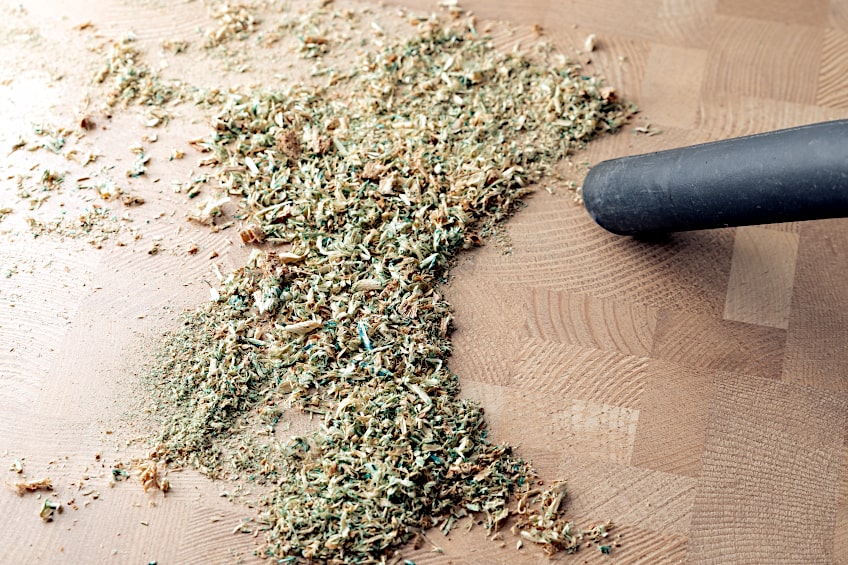
We wouldn’t recommend using any old vacuum cleaner though. Using a general-purpose vacuum cleaner could result in your device breaking, not to mention that it might not have the power to collect all of the fine wood particles produced during the sanding process. Using a heavy-duty vacuum cleaner would be your best bet when dealing with wood particles.
Use a Clean White Cloth
This method is meant to supplement some of the other methods we’ve mentioned previously. For example, if you were to use a vacuum cleaner to clean up your workpiece after sanding, you could use a white cloth to collect the finer wood particles that could have become lodged in the recesses of your workpiece.
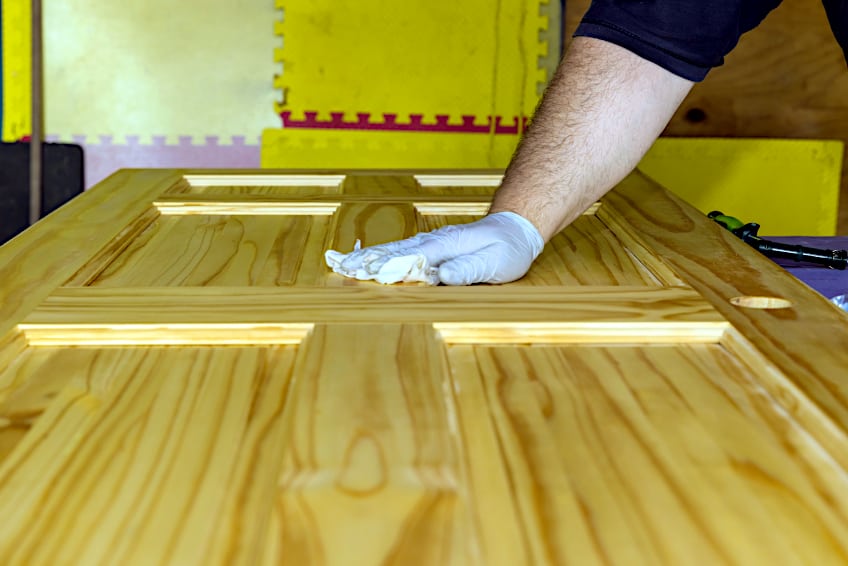
Using a white cloth to pick up these finer wood particles is pretty straightforward. All that you need to do is wipe the cloth over the surface of your wooden workpiece and allow it to pick up any stray wood particles it comes across. Due to the cloth being white, you will be able to see just how much wood dust your primary method of cleanup missed.
Use a Tack Cloth
Since wood particles are super light and tend to move around a lot when you’re trying to clean them up, you might have considered using something that attracts and traps the wood dust particles (besides the vacuum cleaner). Thankfully, there are a bunch of things you can use to achieve this effect besides a vacuum and/or compressed air.
One of the best ways to trap stray wood particles is to use a tack cloth. A tack cloth is essentially a rag made of cheesecloth, the cloth is coated in beeswax, making it super sticky. Wiping this cloth over the surface of your freshly sanded workpiece is one of the best ways to pick up your stray wood particles. Simply wipe the cloth over the surface of your workpiece while applying pressure, and watch those stray wood particles disappear!
Use an Air Compressor Unit
One of the easiest ways to get rid of wood dust present on the surface of your workpiece is to use compressed air. Simply point the spray nozzle at the surface of your workpiece, pull the trigger, and watch all of the little particles disappear! This is a really popular means of cleaning wood dust from the surface of your workpiece, especially among professional wood crafters.
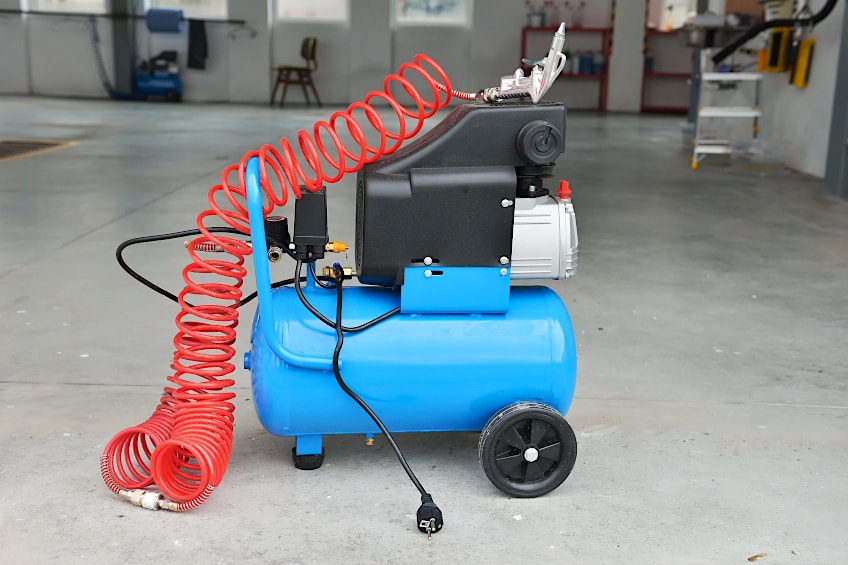
There are a couple of drawbacks to using compressed air to clean the surface of your workpiece though. One is that instead of picking up and trapping the stray wood particles, they’re blown onto the floor of your workspace. This can be inconvenient, especially if your workspace isn’t particularly big, not to mention the fact that air compressors and turbines that produce compressed air can be quite noisy.
Use Trisodium Phosphate Liquid
This method is particularly useful if you still have nasty stains on the surface of your wood even after you’ve sanded the surface of your workpiece. This substance helps remove stains by penetrating the wood fibers and removing said stains with very little effort. All that you need to do is apply trisodium phosphate to the affected area and scrub the area with a stiff brush.
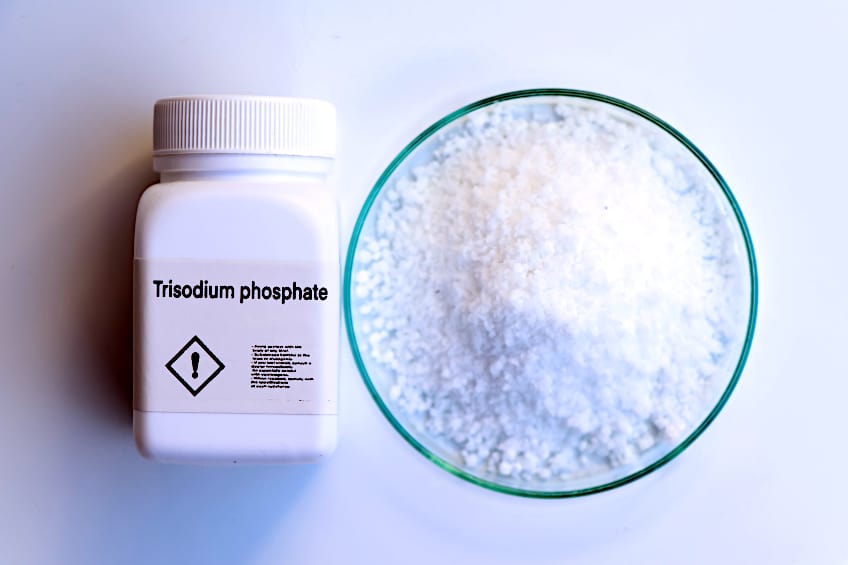
The cool thing about trisodium phosphate is that it allows you to clean the surface of your wooden workpiece without damaging it or causing a chemical burn. Trisodium phosphate is available in both a liquid form and a powdered form that can be diluted which is especially useful if you need to create large volumes of phosphate for your project.
Use Some Mineral Spirits
If trisodium phosphate isn’t really up your alley, you could use some mineral spirits to clean the surface of your workpiece instead. Mineral spirits are also commonly known as turpentine or thinners, and it does a pretty good job of cleaning freshly sanded surfaces. Mineral spirits are especially useful if you intend on painting or staining the surface of your workpiece.
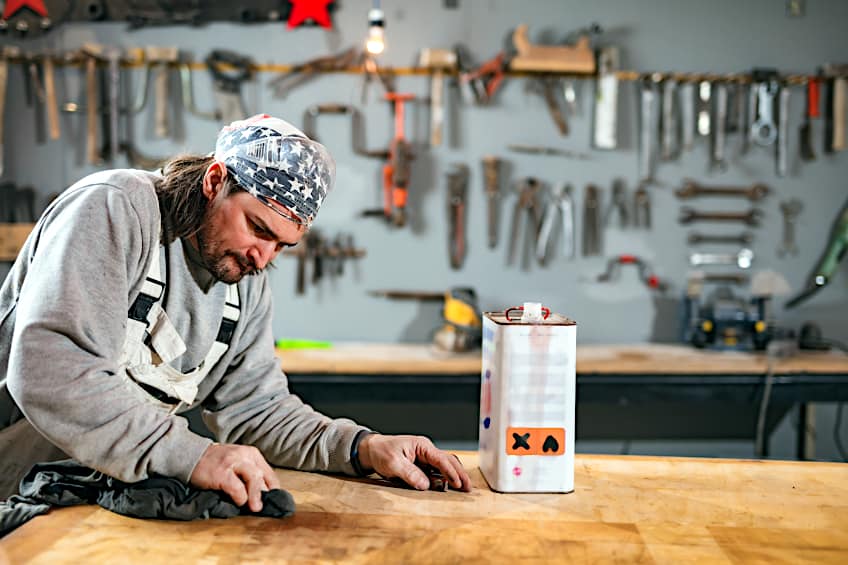
Mineral spirits help clean and prepare the surface of the wood without suturing the wood fibers. To clean wood with mineral spirits all that you need to do is apply some to a clean cloth and wipe down the surface of your workpiece with it. Mineral spirits soften up the surface of your workpiece and make it more receptive to things like paint and wood treatment products.
This allows wood treatment oils like varnish and tung oil to spread and bond with the wood’s fibers more easily. This tends to produce a more even finish across the surface of your workpiece, all while ensuring that it’s nice and clean before you apply your finish! Mineral spirits are readily available and easy to use too.
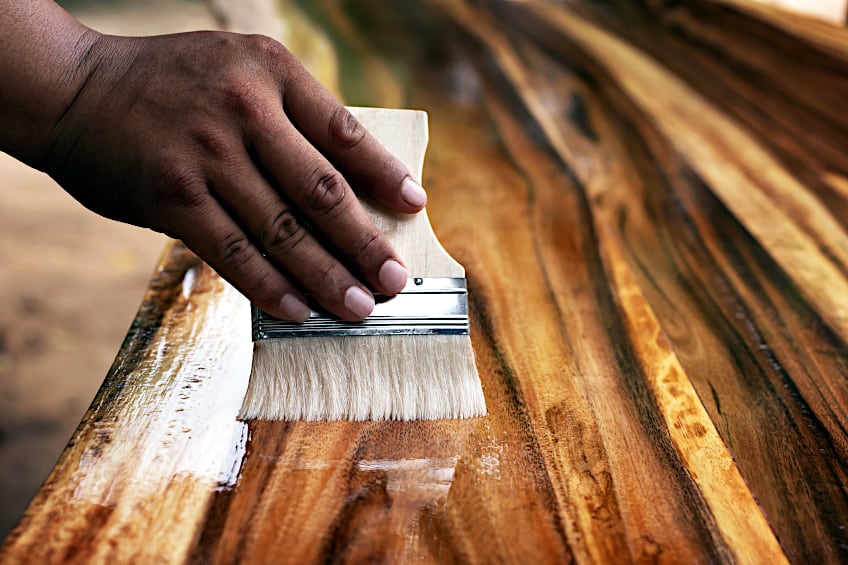
Now that you know how to clean sawdust off wood, why it’s important to ensure that the surface of your workpiece is clean, what some of the best ways to clean your wooden workpiece after sanding are, and some of the products that require a clean workpiece before use, it’s time for you to get out there and put your newfound knowledge to the test! Remember to always wear the appropriate personal protective gear when cleaning up wood particles, and to work in a well-ventilated area.
Frequently Asked Questions
What Is the Best Way to Clean Sawdust off Wood?
Wondering how to clean sawdust off wood? Arguably the best way to clean sawdust off wood is to use a combination of methods. One of the most common combinations is using a vacuum cleaner and a clean white cloth to remove remaining wood particles, as it allows you to reach small holes and recesses on the surface of your workpiece.
Why Should You Clean Your Workpiece After Sanding?
The sanding process tends to leave behind a lot of small wood particles, and these wood particles can stop things like paint and varnish from adhering to the surface, or they could ruin your finish entirely.
Can You Use a Vacuum to Clean Sawdust?
It is perfectly fine to use a vacuum cleaner to get rid of sawdust after you have sanded your workpiece. However, if you’re going to be producing a lot of sawdust regularly, we recommend investing in a heavy-duty vacuum cleaner, or at the very least, one that is graded for this application.

I have been into woodworking since 2005 and woodturning since 2011. Because of my love for wood and woodworking, I started woodhappen.com to teach other enthusiasts about how to finish and seal wood, the best woodworking tools, the different types of wood, and everything else related to woodworking! Read more about me here.

